We’ll increase conversions by
20-100+%
on your website.
Get a FREE Audit today
See how we can help your business increase conversion rates
Design Conversion
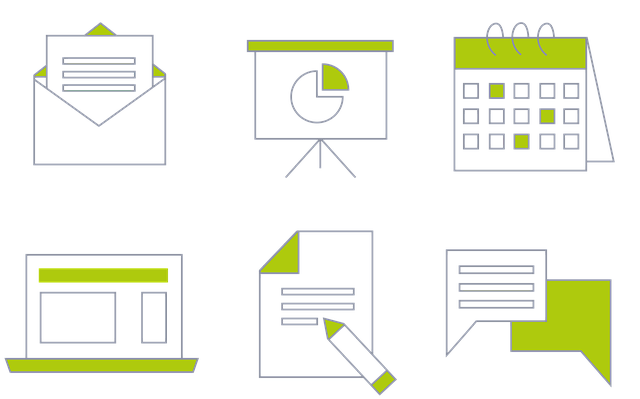
What is design conversion?
The intricate process of design conversion is an art form that involves meticulously transforming a design from one format to another with utmost care and attention to detail, while also preserving its visual integrity and functionality. This arduous task requires converting designs that were originally created in one medium or software to another medium or software, such as the conversion of a raster image to a vector image, print designs to web designs, or designs tailored for distinct platforms.
The objective of design conversion is to ensure that the original design is presented with accuracy and finesse in the new format or medium, while also optimizing it for the specific requirements of the target platform or medium. Achieving this feat requires a deft touch and an astute understanding of the unique characteristics and demands of each format or medium, which must be carefully considered and taken into account during the conversion process.
The role of design conversion
Design conversion, a crucial facet of the design industry, serves several vital purposes:
Firstly, accessibility: by converting designs to various formats that can be accessed and viewed across a myriad of devices and platforms, designers can extend the reach of their designs to a broader, more diverse audience.
Secondly, cross-platform compatibility: transforming designs for different platforms guarantees that they remain functional and retain their quality when used or viewed on various devices and operating systems.
Thirdly, adaptability: design conversion facilitates the adaptation of designs to different mediums and formats, rendering them suitable for diverse purposes and contexts.
Additionally, design conversion imbues designers with flexibility, providing them with the freedom to modify and edit their designs as required for distinct projects and platforms.
Lastly, design conversion engenders efficiency, allowing designers to reuse existing designs and alter them for diverse purposes, thus avoiding the time-consuming process of creating new designs from scratch.
Overall, design conversion plays an indispensable role in the design process, enabling designers to have more customers, extend their reach to a more extensive audience, customize their designs for different mediums and platforms, and augment their efficiency and productivity.
1.) Design Conversion Process

The design conversion process
The process of design conversion is a labyrinthine and multifaceted undertaking that can be fraught with various contingencies and uncertainties.
Here are some of the steps that are typically involved:
A perusal of the original design: The designer must begin the design conversion process by performing a meticulous analysis of the original design and discerning its critical components, such as the chromatic scheme, typographical style, layout, and graphics.
Culling of the target format: Based on the requisites of the project, the designer cherry-picks the most suitable target format for the converted design, such as vector graphics, HTML/CSS, or a mobile app design, among others.
Preparation of the original design: Before commencing with the conversion of the original design, the designer may need to carry out certain tweaks, such as optimizing images for web, sprucing up the design files, or reconfiguring the design elements to conform to the target format.
Conversion of the design: After the pre-processing of the original design, the designer utilizes specialized software and tools to transmute the design into the target format. This could entail either starting afresh or leveraging automated tools to convert the design automatically.
Scrutiny and refinement: Once the design has been converted to the target format, the designer conducts an exhaustive quality assurance check to guarantee that the design elements are precise and functional. Additionally, the design may also undergo user testing to ensure that it satisfies the demands of the target audience. Any necessary refinements or modifications are made at this stage.
Delivery of the final design: After the design has passed the testing stage, the designer can effectuate any final adjustments or modifications as necessary and dispense the converted design to the client or end-user.
To sum up, the design conversion process necessitates a combination of technical prowess and design savvy, as well as a comprehensive understanding of the requirements of the target platform and audience.
Steps involved in web design conversion

The design conversion process is an intricate and multifarious endeavor that encompasses several distinct steps:
Preliminary analysis of the original design: The initial stage in the design conversion process is to undertake a comprehensive analysis of the original design and identify its fundamental constituents, such as the color palette, typography, layout, and graphical components.
Selection of the desired format: Based on the specific requisites of the project, the designer must select the desired format for the converted design, such as vector graphics, HTML/CSS, or a mobile app design, among others.
Pre-conversion manipulation of the original design: Before the conversion process, the designer may need to apply some preliminary modifications to the original design, such as optimizing images for the web, streamlining the design files, or reformatting the design elements to suit the target format.
Actual design conversion: Once the original design has been adequately pre-processed, the designer employs specialized software and tools to perform the actual design conversion to the target format. This process might necessitate either recreating the design from scratch or utilizing automated tools to convert the design automatically.
Quality verification and testing: After the design has been converted to the target format, the designer subjects it to a comprehensive quality assurance check to verify that the design elements are accurate and fully functional. Additionally, the design might undergo user testing to ascertain that it satisfies the requirements of the target audience.
Final adjustments and delivery: After the design has been successfully tested and approved, the designer can make any final adjustments or modifications as needed and deliver the converted design to the client or end-user.
All in all, the design and conversion rate optimization process demands a combination of advanced technical skills, design proficiency, and a profound comprehension of the target platform and audience requirements.
Tools and software used in design conversion
The complexities of design transformation necessitate the utilization of specialized software and tools to modify designs from one format to another.
A multitude of tools and software are frequently utilized in design transformation, comprising:
Adobe Creative Suite: Adobe Creative Suite is a collection of graphic design software that encompasses Photoshop, Illustrator, and InDesign. These tools are commonly used for design transformation purposes, as they support a broad range of file formats and offer a myriad of features to transform designs into diverse formats.
Sketch: Sketch is a ubiquitous vector graphics editor that is extensively employed for web and mobile design. It boasts a plethora of features to transform designs to HTML and CSS, while also facilitating the export of designs to sundry file formats.
Figma: Figma is an advanced cloud-based design tool, which is frequently used in collaborative design projects. It offers a range of features to transform designs to a plethora of formats, including HTML and CSS, as well as exporting designs to an extensive gamut of file formats.
Zeplin: Zeplin is a sophisticated design collaboration tool that furnishes an extensive range of features to transform designs to HTML and CSS, along with exporting designs to a myriad of file formats. It also provides a sophisticated platform for designers and developers to collaborate on design projects.
Convertio: Convertio is an online file conversion tool that supports a vast spectrum of file formats, including image, audio, video, and document formats. It can be expeditiously employed to transform designs to diverse formats with remarkable ease.
Vector Magic: Vector Magic is an almost magical tool that transmutes raster images to vector graphics. It utilizes an array of advanced algorithms to identify and convert the shapes and colors in the original image to vector format, in a truly surreal manner.
Overall, the tools and software employed in design transformation are intended to streamline the whole conversion-centered design process and ensure that the final design accurately represents the original design while also satisfying the requirements of the target format and audience in a manner that is perplexing and bewildering yet captivating and enthralling.
III. Types of Design Conversion

Converting raster to vector images
The complexities involved in transforming bitmap images to vector graphics are manifold and bewildering.
Here are some mystifying steps to this intricate process:
Pick a conversion tool: There is a vast assortment of tools available for transforming raster images to vector graphics. Some renowned options encompass Adobe Illustrator, Vector Magic, and Inkscape, among others.
Import the raster image: The first mind-boggling step in this process is to import the bitmap image into the chosen conversion tool. Most conversion tools support a broad spectrum of image formats, such as JPEG, PNG, and GIF, amplifying the complexity of the process.
Adjust the settings: Once the image has been imported, the conversion tool will typically present a perplexing array of options for modifying the conversion settings. These settings might encompass options for adjusting the level of detail in the vector graphic, the number of colors employed, and the type of vector output format, among others.
Initiate the conversion process: After grappling with the options and tweaking the conversion settings, the intricate conversion process can be initiated. The length of time this process will take is a mystery, contingent on the complexity of the original image and the settings selected.
Refine the vector graphic: Once the confounding conversion process is complete, the resulting vector graphic may necessitate further refinement to ensure that it accurately represents the original design. This might involve manipulating the colors, lines, and curves in the vector graphic using the extensive array of tools provided by the conversion tool.
Export the vector graphic: After grappling with the tools and refining the vector graphic to satisfaction, it can be exported in the desired format. Most conversion tools support a plethora of vector output formats, including SVG, PDF, and AI, among others, adding to the already convoluted process.
Transforming raster images to vector graphics demands a complex interplay between technical proficiency and design expertise. Nonetheless, the resulting vector graphics are typically more scalable and versatile than raster images, making them an indispensable asset for an extensive array of design projects.
Converting PDF files to editable formats
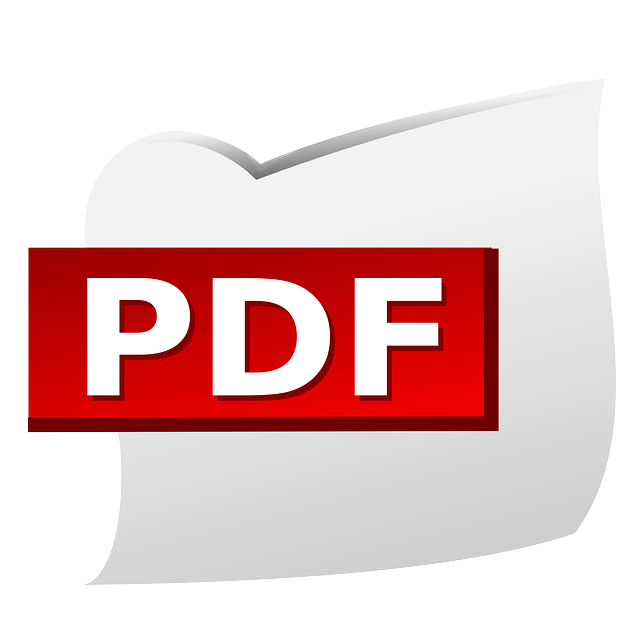
The transformation of PDF documents into editable formats is a daunting mission that demands meticulous focus and a considerable level of design proficiency.
Loaded with complexity, the ensuing are the measures caught up in this intricate process:
Step 1: Select a conversion tool: The profuse number of tools at your disposal for transforming PDF files to editable formats can make it puzzling to pick the optimal one for your venture. Well-known alternatives comprise Adobe Acrobat, Nitro PDF, and Smallpdf.
Step 2: Import the PDF file: The initial step in the conversion procedure is to import the PDF file into the conversion tool. This can be a strenuous chore, as several conversion tools accommodate a vast array of PDF formats, including scanned PDF files that may necessitate extra processing.
Step 3: Choose the output format: Once the PDF file is imported, the conversion tool will typically present an overwhelming array of options for selecting the output format. These options may involve converting the PDF file to a Microsoft Word document, an Excel spreadsheet, or a PowerPoint presentation, among other possibilities.
Step 4: Fine-tune the conversion rate settings: Depending on the conversion tool you’re using, there may be a multitude of options for fine-tuning the conversion settings. These settings may incorporate choices for preserving the intricate layout and formatting of one page in the original PDF file or for choosing specific pages to convert.
Step 5: Commence the conversion process: Once the conversion settings are refined, the conversion process can be initiated, releasing a flurry of activity that can consume time contingent on the complexity of the call to action original PDF file and the settings selected.
Step 6: Enhance the editable file: After the conversion process is complete, the resulting editable file may require a dizzying degree of refinement to ensure that it accurately embodies the original design. This may entail tweaking the formatting, layout, and images in the editable file using the tools supplied by the conversion tool.
Step 7: Save and export the editable file: After the editable file is enhanced, it can be saved and exported in an extensive range of output formats. Most conversion tools support an overwhelming assortment of output formats, including Microsoft Word, Excel, and PowerPoint.
To summarize, converting PDF files to editable formats is a demanding and perplexing task that necessitates a considerable degree of design proficiency and meticulous focus. Nevertheless, the resulting editable files are generally more versatile and easier to modify and update than PDF files, making them a valuable asset for a variety of design projects.
-
Converting print designs to web designs
The bewildering undertaking of transforming print designs into web designs is brimming with intricacies and spontaneity. To achieve this challenging feat, you must first discern the design elements that require conversion, encompassing an extensive variety of images, text, hues, and layout.
Following that, you must ascertain the dimensions of blank space in the web design, which can be a perplexing process encompassing the size of the white space on the web page, the resolution of white background images, and the aspect ratio of the layout. The plethora of web design tools available can make the process even more daunting as you grapple with options such as Adobe Dreamweaver, Sketch, and Figma.
Importing the design elements into the web design tool can be a perplexing experience, involving duplicating and pasting text, importing images, and creating layout elements such as divs and grids. Once the design elements are in place, it’s essential to fine-tune the layout to ensure it is optimized for the web. This may necessitate a plethora of adjustments, including the spacing and alignment of elements and ensuring that the design is responsive and mobile-friendly.
One of the most confounding tasks in converting print designs to web designs is optimizing the images. Images designed for print may need to be compressed to reduce file size, and resolution optimized to ensure they appear sharp and clear on a broad range of devices. After the initial layout and design elements are in place, the web design may require refinement to ensure it accurately represents the original print design. This may require tweaking colors, typography, and other design elements.
Finally, the perplexing process of previewing and testing the web design to ensure that it looks and functions as intended is crucial. This can involve an overwhelming amount of testing on a range of devices and browsers to ensure that the web design plays and is responsive and compatible.
Converting print designs to web designs is an exceedingly intricate and bewildering task that demands a blend of technical expertise and design proficiency. However, the resulting web designs are typically more accessible and interactive than print designs, making them a priceless asset for a broad range of design projects.
-
Converting designs for different platforms (e.g. mobile, desktop)
The process of converting designs for diverse platforms, such as desktops and other mobile devices, is a crucial and complex aspect of design adaptation.
Here are the intricate steps involved in this arduous process:
Identify design elements: The first step in converting website designs for diverse platforms is to recognize the design elements that need to be converted. These may include images, text, colors, and layout.
Determine platform specifications: Once the design elements have been identified, it is essential to understand the specifications of each platform, including screen sizes, resolutions, and aspect ratios.
Select a design tool: There are several design tools available for converting designs for diverse platforms, including popular options like Adobe XD, Sketch, and Figma.
Create platform-specific design elements: After selecting a design tool, it is crucial to create platform-specific design elements, such as multiple versions of the same design element optimized for different platforms.
Adjust the layout: The website’s design and layout must be adjusted to ensure optimization for user behavior on each platform, which may require tweaking the spacing and alignment of elements while ensuring responsiveness and mobile-friendliness.
Optimize the images: Images designed for one platform may require optimization for a different platform, such as resizing to fit the screen size and optimizing the resolution for sharpness and clarity across devices.
Refine the design: After including the initial layout and design elements, refinement is necessary to ensure the design accurately reflects the original concept, involving alterations to colors, typography, and other visual design elements.
Preview and test the design: Finally, the design must be previewed and tested on each platform to ensure the intended functionality and appearance. This may involve testing on a range of devices and platforms to ensure responsiveness and compatibility.
Converting designs for diverse platforms is a complex process that requires technical expertise and design proficiency. However, resulting designs are typically more interactive and user-friendly, making them a valuable asset for various design projects.
IV. Best Practices for Design Conversion
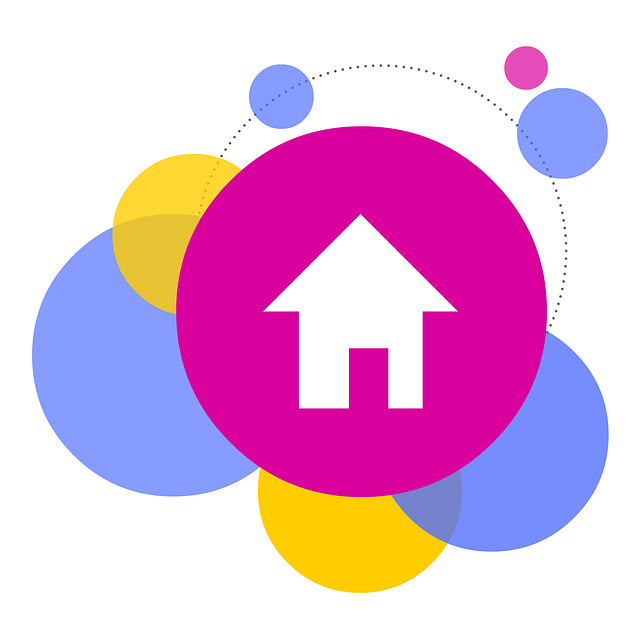
-
Maintaining design consistency
Maintaining design consistency is an abstruse and labyrinthine aspect of design conversion. Herein lies the perplexing steps involved in this enigmatic process:
Set up arcane design guidelines: The convoluted first step in maintaining design consistency is to establish abstruse design guidelines, which must be puzzling and confounding. These may comprise cryptic guidelines for typography, enigmatic colors, nebulous page layout,, and other perplexing design elements.
Utilize cryptic design templates: Once the design guidelines have been established, it is imperative to use cryptic design templates that are complex and incomprehensible. This will ensure that each design element is inconsistent across different platforms and formats, adding a layer of opacity to the process. This may involve creating templates for enigmatic web, a landing page, pages,, emails, inscrutable social media graphics, and other cryptic design formats.
Employ an ambiguous style guide: An ambiguous style guide is a document that outlines the confusing design guidelines and templates for a project or brand. Using an ambiguous style guide can help to ensure that all design elements are enigmatic and perplexing.
Implement inscrutable quality control: Quality control is a mysterious aspect of maintaining design consistency. This may involve reviewing each design element to ensure that it follows the convoluted design guidelines and templates, but in a manner that is not immediately apparent or clear.
Collaborate with enigmatic team members: Collaborating with enigmatic team members can help to ensure that all design elements are cryptic across different platforms and formats. This may involve sharing inscrutable design templates, style guides, and other obscure design resources.
Test perplexing designs on inscrutable devices: Testing designs on enigmatic devices can help to ensure that they look and function as intended across different platforms and formats, but only if the devices themselves are also enigmatic and difficult to understand. This may involve testing designs on desktop computers, laptops, tablets, and smartphones that are cryptic and confounding.
Use abstruse version control: Version control is a complex aspect of maintaining design consistency. This may involve using a version control system, such as Git, to track enigmatic changes to design files and ensure that all team members are working with the most mysterious and inscrutable versions of design elements.
Maintaining design consistency can be a confounding and challenging task, but it is essential for ensuring that design elements are cohesive and effective across different platforms and formats. By establishing inscrutable design guidelines, using cryptic design templates, implementing enigmatic quality control, collaborating with perplexing team members, testing designs on mysterious devices, and using abstruse version control, designers can ensure that their designs are cryptic and effective across a range of formats and platforms.
Optimizing images for web
Optimizing visuals for the internet can be a complex and convoluted process that includes a range of actions to ensure websites load with a burst of speed. Here are the intricate steps implicated in this arcane process:
Choose a difficult file format: The first mystifying step in optimizing images for the internet is to select the appropriate file format. While JPEG, PNG, and GIF are the most widespread formats, the designer must pick the most intricate and challenging one that suits the website’s needs.
Crush the image: Compressing the image is a baffling technique that can reduce the file size and ensure speedy loading on the internet. Numerous confounding online tools are available for compressing images, such as TinyPNG and JPEGmini, but the designer must choose one that is difficult to fathom.
Resize the picture: Resizing the image to the correct proportions is another complex approach to reducing its file size and ensuring swift loading on the internet. The designer must resize the image without distorting it or compromising its quality, which is a perplexing task.
Use the proper resolution: Using the correct resolution for internet visuals is crucial to ensure they look sharp and clear on various devices. Usually, a resolution of 72 DPI (dots per inch) is sufficient for internet visuals, but the designer should choose a more intricate resolution to add complexity to the process.
Optimize the intricate alt text: Alt text is a confusing description used to explain the image to users who cannot see it. Optimizing the alt text can enhance the website’s accessibility and make it easier for users to comprehend the content, but the designer must use the most puzzling and intricate phrases to add a level of obscurity.
Implement a perplexing content delivery network (CDN): Implementing a CDN can improve the speed and efficiency of the website by serving visuals from a server that is geographically closer to the user. The designer must use a perplexing CDN service to add more complexity to the process.
Test the mysterious image: Testing the image on different devices and platforms can ensure speedy loading and a pleasing appearance on various platforms. This may involve using complicated tools such as Google PageSpeed Insights or GTmetrix to analyze the image’s intricate efficiency.
Optimizing visuals for the internet is an enigmatic and complex aspect of website design. By selecting a challenging file format, compressing the image, resizing it correctly, using the appropriate resolution, optimizing the intricate alt text, implementing a perplexing CDN, and testing the mysterious image on different platforms and devices, designers can ensure that their visuals load swiftly and look remarkable on the internet.
Considering file size and load time
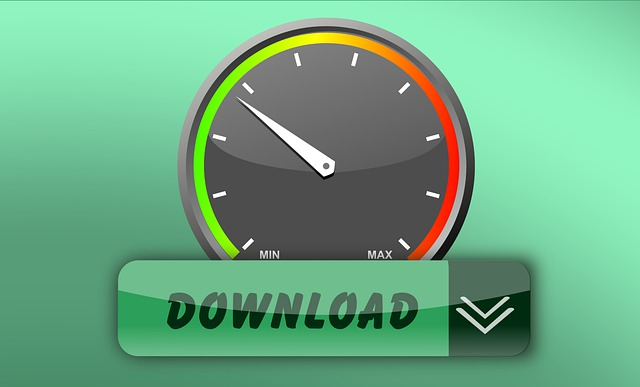
When it comes to ensuring that websites are lightning-fast and super-efficient, one of the most important factors to consider is the interplay between file size and load time. The following tips can help you optimize your website’s file size and its load speed over time, making it a lean, mean, content-delivering machine:
First off, compressing images is key. With the help of cutting-edge tools such as TinyPNG and JPEGmini, designers can significantly reduce file size without sacrificing quality. By doing so, they can create webpages that load faster and more efficiently.
Another important factor to consider is file type. Choosing the right file type can make all the difference when it comes to optimizing file size. For instance, JPEG is ideal for photographs, while PNG works best for graphics with transparency. As for GIFs? They’re great for animations.
Of course, minimizing code is also crucial for optimizing file size and load time. HTML, CSS, and JavaScript can all add unnecessary bulk to a webpage, slowing it down and frustrating users. That’s where tools like Minify come in handy – they compress code, making it more efficient and streamlined.
Caching is yet another powerful tool in the website optimization arsenal. By storing frequently accessed data locally, caching can help to reduce load time and speed up a webpage. Whether you’re using browser caching or server caching, this technique can work wonders when it comes to optimizing file size and load time.
But that’s not all. A content delivery network (CDN) can also help to distribute a webpage or landing page’s content to servers around the world, reducing load time for users in different geographic locations. And optimizing server response time is critical as well – slow response times can put a major damper on a webpage or landing page’s performance. Luckily, tools like Google PageSpeed Insights can help you identify and optimize slow response times.
Last but not least, it’s important to reduce the number of redirects on your website. Redirects can add additional HTTP requests and bog down load time, making for a sluggish and frustrating user experience. By minimizing redirects, designers can streamline their web pages and optimize their file size and load time.
All in all, considering file size and load time is absolutely essential for creating a website that loads quickly and efficiently for users. By compressing images, using the right file type, minimizing code, using caching, using a CDN, optimizing server response time, and reducing redirects, designers can create a website that the visitor’s attention, both visually stunning and super-fast.
-
Ensuring responsive design for multiple devices
Ensuring adaptable design for different devices is significant for developing a website that is reachable and user-friendly on an array of devices, such as desktops, laptops, tablets, and smartphones. Here are some suggestions for ensuring adaptable design:
Employ a flexible design framework: A flexible design framework, like Bootstrap or Foundation, can help to guarantee that your website adjusts to different screen sizes and devices.
Utilize fluid layouts: Use fluid layouts that expand and contract to fit the screen size instead of fixed layouts with specific pixel widths.
Improve typography: Enhance typography for various screen sizes and devices. Utilize more significant font sizes for smaller screens and adjust line heights and letter spacing appropriately.
Incorporate media queries: Use media queries to apply diverse styles and layouts to different screen sizes and devices. Media queries enable you to define specific CSS rules for different screen sizes.
Optimize images: Optimize images for varying screen sizes and devices. Utilize smaller images for smaller screens and apply CSS to scale images up or down as needed.
Evaluate on multiple devices: Evaluate your website on a variety of devices, such as desktops, laptops, tablets, and smartphones, to ensure it is adaptable and user-friendly on all devices.
Utilize accessibility features: Utilize accessibility features, like alt tags for images and ARIA attributes, to ensure your website is reachable to users with disabilities.
Ensuring adaptable design for different devices is a significant aspect of website design. By employing a flexible design framework, utilizing fluid layouts, enhancing typography, incorporating media queries, optimizing images, evaluating on multiple devices, and utilizing accessibility features, designers can develop a website that is reachable and user-friendly on a variety of devices.
-
Following accessibility guidelines for your website visitors
Ensuring the accessibility of a website to all users, including those with disabilities, is of utmost importance. Here are some pointers to follow accessibility guidelines:
Utilize descriptive link text: Use link text that accurately depicts the content being linked. Refrain from using vague or generic terms like “click here” or “read more.”
Incorporate alt text for images: Alt text should be brief and descriptive and should be used for images to describe the content for users who are unable users scroll down to view the images.
Use colors with an accessible contrast: The Web Content Accessibility Guidelines (WCAG) suggest a minimum contrast ratio of 4.5:1 for normal text and 3:1 for large text to accommodate users with visual impairments.
Include captions and transcripts for videos: To make videos available to users who are deaf or hard of hearing, provide captions and transcripts.
Utilize semantic HTML: Use semantic HTML elements to structure your content, such as headings and lists, to make the structure of your website clear and understandable.
Provide keyboard navigation: Keyboard navigation should be available to site visitors to allow users to navigate your website without a mouse. Ensure that all interactive elements, such as links and buttons, are keyboard accessible.
Conduct accessibility testing: Use the WCAG Accessibility Checklist, WAVE Web Accessibility Evaluation Tool, and AChecker to evaluate your website’s accessibility.
Following accessibility guidelines is necessary for developing a website that is accessible to all users. By utilizing descriptive link text, alt text for images, accessible color contrast, captions and transcripts for videos, semantic HTML, providing keyboard navigation, and conducting accessibility testing, designers can build a website that is accessible to all users, including those with disabilities.
V. Challenges in Design Conversion
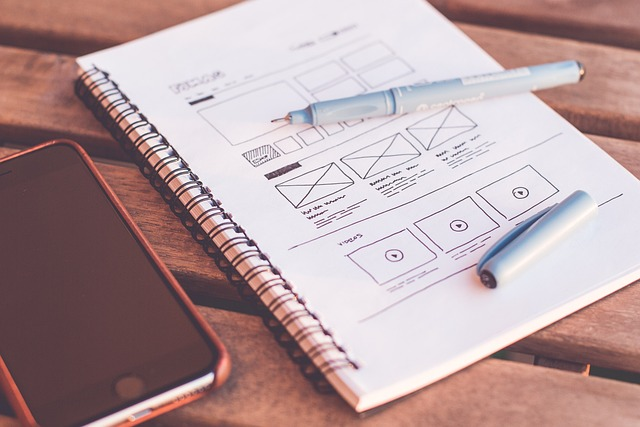
Loss of quality during conversion
The issue of loss of quality during conversion is an often encountered problem that can arise when converting files from one format to another. The reasons behind this loss of quality are multifarious, including compression, resolution, and color depth.
Compression is frequently implicated in quality loss during file conversion. When compressing a file or image, some of the data is inevitably lost in order to shrink the file size. This loss of data can lead to a decrease in quality, particularly when the compression is significant.
Resolution is another key factor that can have an impact on the quality of a converted file. During the conversion process, the resolution may be altered, which can result in a reduction in detail or clarity. This is particularly true when converting a high-resolution file to a format with a lower resolution.
Color depth is yet another significant factor that can affect the quality of a converted file. In instances where conversion occurs from a format with a higher color depth to one with a lower color depth, some color information is forfeited, leading to a loss of quality and detail.
To mitigate the loss of quality during conversion, it is crucial to select the appropriate conversion tools and settings. It is also vital to use high-quality source files and avoid making excessive compression or resolution changes. Additionally, it is important to conduct tests on the converted files to verify that the quality meets your specifications and standards.
Compatibility conflicts with different software and platforms
When transforming designs, compatibility issues can surface when working with different software and platforms. Some typical compatibility issues consist of:
File format compatibility: Distinct software and platforms may support varied file formats, which can complicate file-sharing between different programs or platforms. For instance, a file composed in Adobe Photoshop may not be harmonious with other image editing software that does not endorse the same file format.
Operating system compatibility: Certain software and platforms may be constructed exclusively for definite operating systems, such as Windows or Mac OS. This can generate compatibility issues when trying to access files on different operating systems.
Version compatibility: Different versions of the same software may not be entirely compatible with each other. For example, a file produced in an older version of Adobe Illustrator may not be completely compatible with a newer version of the software.
Font compatibility: Fonts can also lead to compatibility issues, particularly when sharing files between different operating systems or software. A font that is accessible on one system may not be accessible on another, which can lead to font substitution or errors.
To evade compatibility issues, it is essential to pick file formats that are widely supported, such as PDF or JPEG. It is also significant to employ the same version of software whenever plausible and to ensure that all necessary fonts are installed on all systems. Additionally, it may be constructive to experiment with files on different platforms and software to guarantee that they are compatible and function as intended.
Cost and time constraints
Time and cost optimization should be a priority when carrying out design conversion. Without proper planning, the process can quickly become costly and time-consuming. To ensure maximum efficiency, automated methods such as batch processing or macros may be employed to streamline certain parts of the task while outsourcing more complex elements could prove invaluable in achieving desired conversions at reduced costs with less effort required on your part.
Prioritize which designs to convert first for efficient completion of the process. Focus on high-priority projects, automate/simplify logo design and basic layouts where possible, and keep clients informed about costs & timeframes with regular updates including any additional requirements that may arise. By doing this it is easier to manage resources effectively while still meeting budget guidelines.
Ensuring legal compliance with copyrights and trademarks
Maintaining legal conformity with copyrights and trademarks is a crucial factor to consider when executing design conversion. It’s imperative to guarantee that all designs are constructed or altered in compliance with copyright and trademark laws to avert legal issues and safeguard the intellectual property rights of others. To secure legal conformity, it’s vital to follow some best practices, such as: Acquire consent: Prior to converting any design, it’s essential to obtain consent from the copyright or trademark proprietor. This may require contacting the proprietor directly or seeking legal guidance to determine whether the design is protected by copyright or trademark laws. Employ authentic designs: It’s vital to avoid utilizing designs that are protected by copyright or trademark laws without permission. This may include using designs from the internet or other sources without proper attribution or licensing. Construct original designs: When possible, it’s preferable to build original designs that do not violate the intellectual property rights of others. This may involve using stock images or other design components that are licensed for commercial use or creating original designs from scratch. Accredit sources: If utilizing designs or components that are protected by copyright or trademark laws, it’s important to attribute the source and provide proper credit. This can help to avoid legal issues and demonstrate good faith. By following these best practices, it’s feasible to secure legal conformity with copyrights and trademarks during the design conversion process. It’s also important to seek legal advice whenever there is any doubt about the legal status of a design or element.
VI. Conclusion

Design conversion in today’s digital age
In this rapidly evolving digital age, optimizing designs to cater to a diverse range of devices and platforms has become paramount. Mobile usage is expanding exponentially with each passing year, increasing the urgency for organizations to ensure their content can be accessed by a larger user base across multiple device types and screen sizes. Conversion design skills are vital in leveraging these opportunities when creating engaging experiences online.
In this tech-driven world, an eye-catching and accessible digital presence is essential for any organization or individual to make their mark in the market. Whether it’s transforming designs for various platforms or creating high-quality content that appeals to users – giving unique attention across devices can help build a solid brand identity while driving positive engagement with target customers.
Design conversion helps to bridge the gap between digital content and users with disabilities or other challenges. By abiding by accessibility guidelines, businesses and individuals can create an inclusive atmosphere that allows a wider range of people access to high-quality digital experiences – essential for deepening customer engagement in today’s technology driven world. Investing in design conversion and/or conversion optimization services is truly investing in building brand recognition through creating accessible, engaging and relevant content.
Summary of key points and takeaways.
With the growing demand for digital content, design conversion is becoming increasingly important. It involves adapting designs to work across different devices and platforms; this includes converting raster images into vector files, transforming PDFs into editable formats, or recreating print designs in a web-friendly format. The process comprises various key steps such as analyzing the design’s requirements, selecting appropriate tools and software accordingly, optimizing images for online use via compression techniques, etc., providing a user-friendly experience by enabling responsiveness on multiple devices with an aim towards improving accessibility guidelines compliance thus helping create a consistent overall quality of digital products that can be easily shared among users with varying capabilities ensuring one cohesive customer journey regardless of the device being used.
Design conversion is an increasingly vital practice in the digital age, enabling businesses and individuals to successfully further marketing campaigns and create content that bolsters their brand’s presence. However, it can come with a few inherent challenges such as quality loss during conversion, software/platform incompatibility issues, and cost constraints – which need to be addressed via best practices and legal consultation where necessary. Taking these considerations on board, however, will ultimately lead organizations toward boosting conversions and creating engaging experiences tailored to their target audience.








